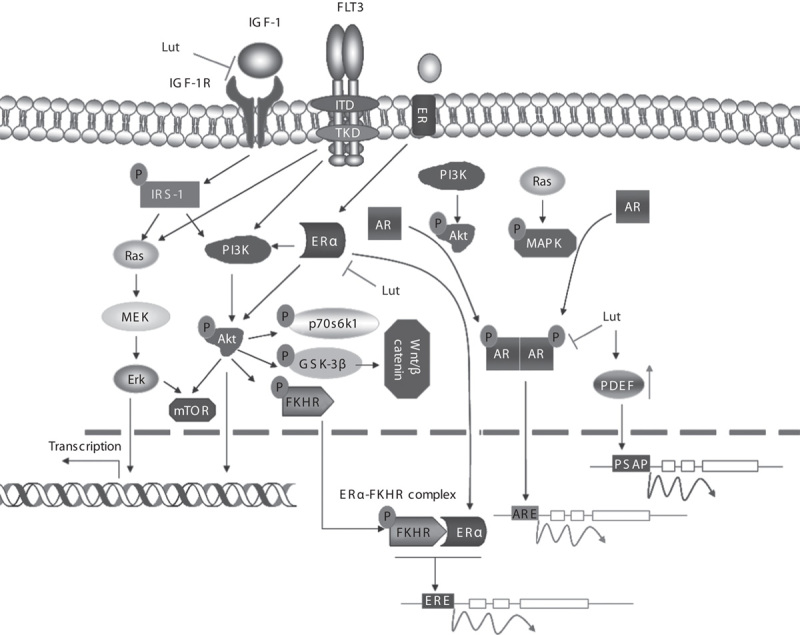Fig. 2.

Luteolin (Lut) modulates cancer cell cycle progression. Luteolin’s antiproliferative activity is attributed to its ability to inhibit IGF-1 activation, thus preventing the phosphorylation of the intracellular IRS-1 and its downstream targets. Furthermore, luteolin inhibits IGF-1-mediated PI3K/Akt activation by reducing the expression of ERα. Estradiol receptor triggers the PI3K/AKT pathway, mediating FKHR phosphorylation, which functionally associates with ERα and forms a FKHR–ERα complex. Inhibiting AKT activity reduces phosphorylation of its downstream targets, including p70S6K1, GSK-3β, and FKHR. Luteolin suppresses prostate cancer cell proliferation by downregulating AR expression. Phosphorylation of the cytoplasmic AR by MAPK and AKT enables AR to form dimers and enhances ARE. By contrast, luteolin upregulates the expression of PDEF, which acts as an androgen-independent transcriptional activator of the prostate-specific antigen promoter. AR, androgen receptor; ARE, androgen response element; ER, estrogen receptor; Erk, extracellular signal-regulated kinase; FKHR, forkhead transcription factor; FLT3, Fms-like tyrosine kinase 3; GSK-3β, glycogen synthase kinase-3β; IGF-1, insulin-like growth factor 1; IRS-1, insulin receptor substrate 1; ITD, internal tandem duplications; MAPK, mitogen-activated protein kinase; mTOR, mammalian target of rapamycin; PDEF, prostate-derived Ets factor; PSAP, prosaposin; TDK, tyrosine kinase domain.
